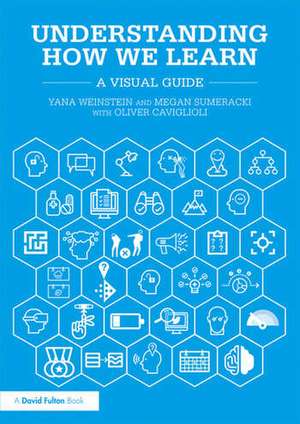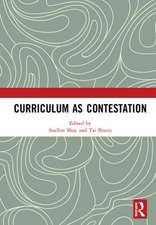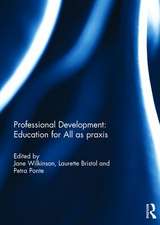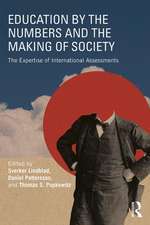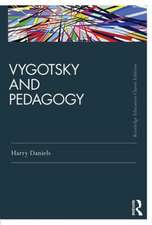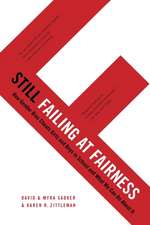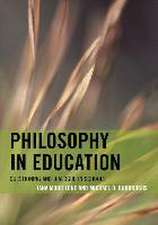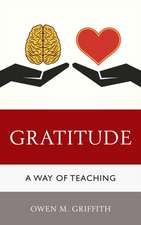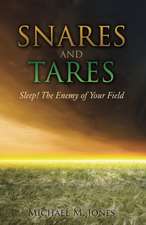Understanding How We Learn: A Visual Guide
Autor Yana Weinstein, Megan Sumeracki, Oliver Cavigliolien Limba Engleză Paperback – 16 aug 2018
This accessible guide helps teachers to integrate effective, research-backed strategies for learning into their classroom practice. The book explores exactly what constitutes good evidence for effective learning and teaching strategies, how to make evidence-based judgments instead of relying on intuition, and how to apply findings from cognitive psychology directly to the classroom.
Including real-life examples and case studies, FAQs, and a wealth of engaging illustrations to explain complex concepts and emphasize key points, the book is divided into four parts:
- Evidence-based education and the science of learning
- Basics of human cognitive processes
- Strategies for effective learning
- Tips for students, teachers, and parents.
| Toate formatele și edițiile | Preț | Express |
|---|---|---|
| Paperback (1) | 169.51 lei 3-5 săpt. | +13.76 lei 7-13 zile |
| Taylor & Francis – 16 aug 2018 | 169.51 lei 3-5 săpt. | +13.76 lei 7-13 zile |
| Hardback (1) | 681.92 lei 6-8 săpt. | |
| Taylor & Francis – 30 aug 2018 | 681.92 lei 6-8 săpt. |
Preț: 169.51 lei
Nou
Puncte Express: 254
Preț estimativ în valută:
32.43€ • 33.87$ • 26.84£
32.43€ • 33.87$ • 26.84£
Carte disponibilă
Livrare economică 15-29 martie
Livrare express 01-07 martie pentru 23.75 lei
Preluare comenzi: 021 569.72.76
Specificații
ISBN-13: 9781138561724
ISBN-10: 113856172X
Pagini: 176
Ilustrații: 204 Illustrations, black and white
Dimensiuni: 174 x 246 x 12 mm
Greutate: 0.36 kg
Ediția:1
Editura: Taylor & Francis
Colecția Routledge
Locul publicării:Oxford, United Kingdom
ISBN-10: 113856172X
Pagini: 176
Ilustrații: 204 Illustrations, black and white
Dimensiuni: 174 x 246 x 12 mm
Greutate: 0.36 kg
Ediția:1
Editura: Taylor & Francis
Colecția Routledge
Locul publicării:Oxford, United Kingdom
Public țintă
Professional and Professional Practice & DevelopmentCuprins
Acknowledgments Author Profile Illustrator Profile Part 1 Evidence-Based Education and the Science of Learning Chapter 1: Communication Breakdown Between Science and Practice in Education Chapter 2: Different Types of Evidence in Education Chapter 3: Is Intuition the Enemy of Teaching and Learning? Chapter 4: Pervasive Misunderstandings About Learning: How They Arise, and What We Can Do Part 2 Basics of Human Cognitive Processes Chapter 5: Perception Chapter 6: Attention Chapter 7: Memory Part 3 Strategies for Effective Learning Introduction Chapter 8: Planning Learning: Spaced Practice and Interleaving Chapter 9: Development of Understanding Chapter 10: Reinforcement of Learning: Retrieval Practice Part 4 Tips for Teachers, Students, and Parents Chapter 11: Tips for Teachers Chapter 12: Tips for Students Chapter 13: Tips for Parents Glossary
Notă biografică
Yana Weinstein is Assistant Professor of Psychology at University of Massachusetts Lowell, USA. Yana is co-founder of The Learning Scientists, http://www.learningscientists.org/, a project whose goal is to make scientific research on learning more accessible to students, teachers, and other educators. Yana tweets as @doctorwhy.
Megan Sumeracki (formerly Smith) is Assistant Professor of Psychology at Rhode Island College, USA. Megan is co-founder of The Learning Scientists, where she aims to increase the use of effective study and teaching strategies that are backed by research. Megan tweets as @DrSumeracki.
Oliver Caviglioli was a principal of a special school for a decade, before co-creating the HOW2s– visual guides to evidence-based teaching techniques. More recently, Oliver has used a variety of visual formats in different contexts: hand-drawn sketchnotes, digital diagrams, infographics, live hand-drawn conference notes and posters. Oliver is busy on Twitter as @olicav.
Megan Sumeracki (formerly Smith) is Assistant Professor of Psychology at Rhode Island College, USA. Megan is co-founder of The Learning Scientists, where she aims to increase the use of effective study and teaching strategies that are backed by research. Megan tweets as @DrSumeracki.
Oliver Caviglioli was a principal of a special school for a decade, before co-creating the HOW2s– visual guides to evidence-based teaching techniques. More recently, Oliver has used a variety of visual formats in different contexts: hand-drawn sketchnotes, digital diagrams, infographics, live hand-drawn conference notes and posters. Oliver is busy on Twitter as @olicav.
Recenzii
"This book is incredibly useful for students, parents, and teachers alike. As a high school teacher, the information provided will only serve to better my classroom and my student’s understanding of learning. The content, both word and illustrations, creates an easily accessible text packed with material. I highly recommend Understanding How We Learn. I may order two copies because I’m sure I’ll be using and sharing the book often with my fellow teachers." - Blake Harvard, James Clemens High School, USA
"Many educators are today advocating for evidence-based education. This book is an excellent source for the current evidence on ways to improve learning, as well as practical tips on how to use the strategies. The authors write for teachers, students, and parents. I highly recommend this book for all three groups." - Henry L. Roediger III, James S. McDonnell Distinguished University Professor of Psychology, Washington University, USA
"In Understanding How We Learn Sumeracki and Weinstein urge educators, students and parents to pay less attention to intuition and pay more attention to research. The book then enables them to do that. As a result, they synthesise a huge wealth of research literature on cognitive science into a readable, practical guide that serves as a tool to transform teaching, and hence learning. Laced with anecdotes and examples that make this an essential read, the wealth of academic references mean that this book will be invaluable in transforming your institution, and the educators and students within it, to be more effective. An absolute must-read for all educators, teachers, and students." - Stuart Lock, Executive Principal of Bedford Free School and Director at Northampton Primary Academy Trust, UK
"An accessible, fascinating journey through research methods, findings and application. If every teacher across our multi-academy trust could apply these findings (and there’s nothing so complicated here that this couldn’t be done), the benefits to student learning could be enormous." — Linda Ferris, Schools Week
"Understanding how we learn: a visual guide should be recommended to every student, and for that matter their teachers. It draws on scientific research in psychology to explain what works and what doesn’t work when it comes to learning and recall."— Terry Freedman, ICT & Computing in Education
"Many educators are today advocating for evidence-based education. This book is an excellent source for the current evidence on ways to improve learning, as well as practical tips on how to use the strategies. The authors write for teachers, students, and parents. I highly recommend this book for all three groups." - Henry L. Roediger III, James S. McDonnell Distinguished University Professor of Psychology, Washington University, USA
"In Understanding How We Learn Sumeracki and Weinstein urge educators, students and parents to pay less attention to intuition and pay more attention to research. The book then enables them to do that. As a result, they synthesise a huge wealth of research literature on cognitive science into a readable, practical guide that serves as a tool to transform teaching, and hence learning. Laced with anecdotes and examples that make this an essential read, the wealth of academic references mean that this book will be invaluable in transforming your institution, and the educators and students within it, to be more effective. An absolute must-read for all educators, teachers, and students." - Stuart Lock, Executive Principal of Bedford Free School and Director at Northampton Primary Academy Trust, UK
"An accessible, fascinating journey through research methods, findings and application. If every teacher across our multi-academy trust could apply these findings (and there’s nothing so complicated here that this couldn’t be done), the benefits to student learning could be enormous." — Linda Ferris, Schools Week
"Understanding how we learn: a visual guide should be recommended to every student, and for that matter their teachers. It draws on scientific research in psychology to explain what works and what doesn’t work when it comes to learning and recall."— Terry Freedman, ICT & Computing in Education
Descriere
This accessible guide shows how to integrate effective, research-backed strategies for learning into classroom practice. With clear illustrations, the book explores what constitutes good evidence for learning and teaching strategies, how to make evidence-based judgments and how to apply findings from cognitive psychology to the classroom.
